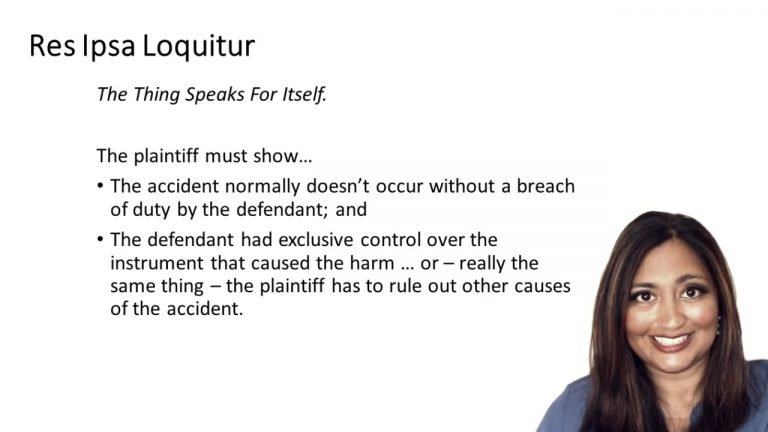SmartBrief
Confirm favorite deletion?
Torts Keyed to Prosser
James v. Wormuth
Citation:
21 N.Y.3d 540, 997 N.E.2d 133, 974 N.Y.S.2d 308Facts
Dr. Wormuth performed a lung biopsy on James. A guide wire was used in the operation to locate the area of James’ lung to be biopsied. The guide wire became dislodged during the surgery. Dr. Wormuth conducted a 20-minute manual search for the wire but was unable to find it. He decided that it was best to leave the wire inside James. After the surgery, Dr. Wormuth informed James that he left the wire inside her and why he had done so. Weeks later, James returned complaining of postoperative pain that she attributed to the presence of the wire. She sued Dr. Wormuth for medical malpractice. During trial, James asserted that the doctrine of res ipsa loquitor applied since the wire was a foreign object that only could have been left inside her as a result of Dr. Wormuth’s negligence. Dr. Wormuth testified that it was his professional judgment that it was safer to leave the guide wire inside James. He stated that it would have been too risky to extend the period under which James was anesthetized and to make a larger incision to remove the wire. The trial court directed a verdict for defendant, which was affirmed by the appellate division. James appealed to the Court of Appeals of New York.
Only StudyBuddy Pro offers the complete Case Brief Anatomy*
Access the most important case brief elements for optimal case understanding.
*Case Brief Anatomy includes: Brief Prologue, Complete Case Brief, Brief Epilogue
- The Brief Prologue provides necessary case brief introductory information and includes:
Topic:
Identifies the topic of law and where this case fits within your course outline.Parties:
Identifies the cast of characters involved in the case.Procedural Posture & History:
Shares the case history with how lower courts have ruled on the matter.Case Key Terms, Acts, Doctrines, etc.:
A case specific Legal Term Dictionary.Case Doctrines, Acts, Statutes, Amendments and Treatises:
Identifies and Defines Legal Authority used in this case.
- The Case Brief is the complete case summarized and authored in the traditional Law School I.R.A.C. format. The Pro case brief includes:
Brief Facts:
A Synopsis of the Facts of the case.Rule of Law:
Identifies the Legal Principle the Court used in deciding the case.Facts:
What are the factual circumstances that gave rise to the civil or criminal case? What is the relationship of the Parties that are involved in the case.Issue(s):
Lists the Questions of Law that are raised by the Facts of the case.Holding:
Shares the Court's answer to the legal questions raised in the issue.Concurring / Dissenting Opinions:
Includes valuable concurring or dissenting opinions and their key points.Reasoning and Analysis:
Identifies the chain of argument(s) which led the judges to rule as they did.
- The Brief Prologue closes the case brief with important forward-looking discussion and includes:
Policy:
Identifies the Policy if any that has been established by the case.Court Direction:
Shares where the Court went from here for this case.

 6m 37s
6m 37s